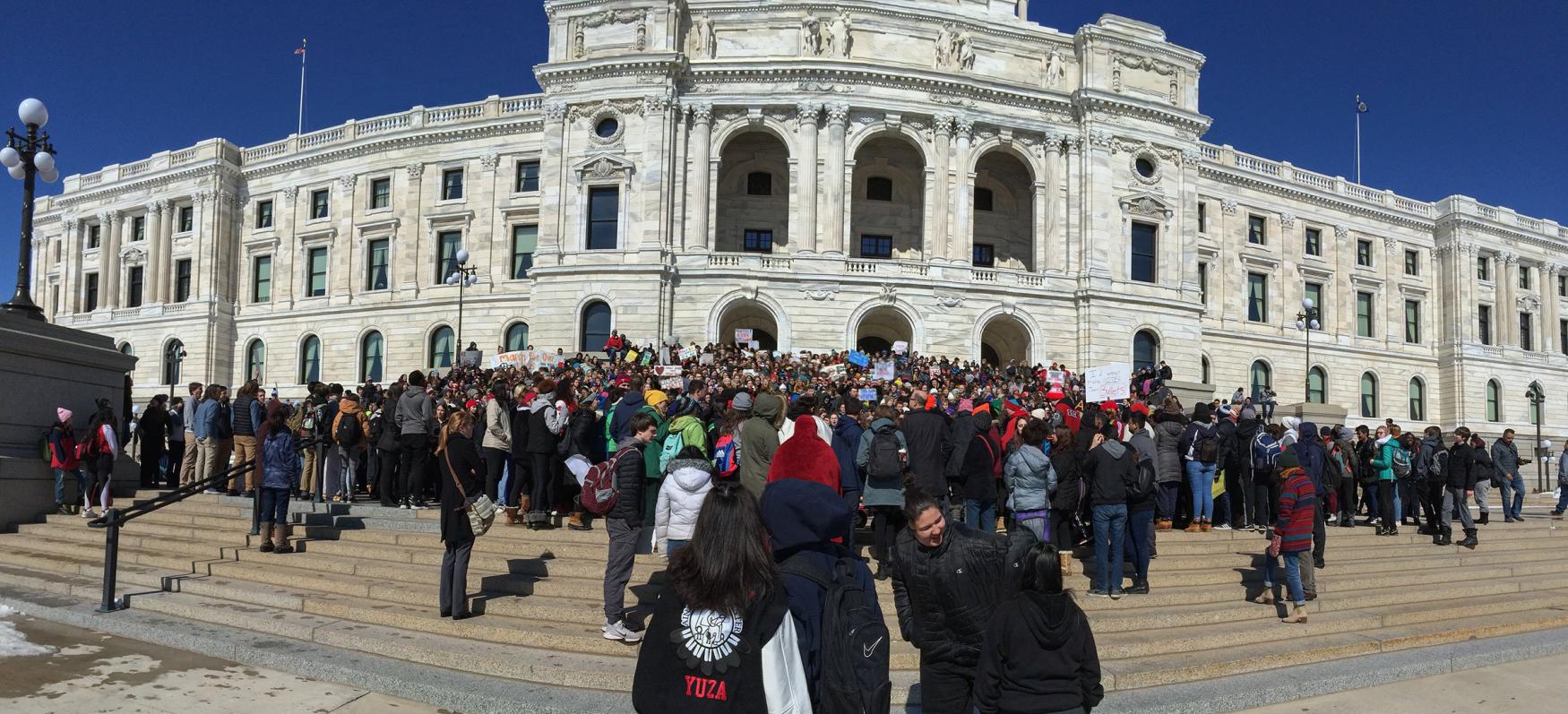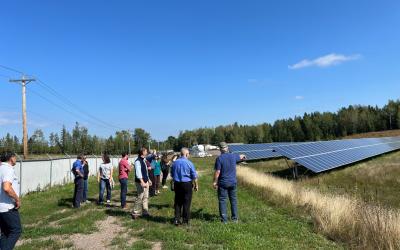Since launching Minnesota’s Climate Action Framework in September 2022, we’ve made big strides toward achieving our climate goals of cutting climate pollution, preparing for the changes ahead, and building a clean economy that works for all Minnesotans.
Commissioners from Minnesota’s Climate Change Subcabinet explain some of the actions that state government is leading to bring the Climate Action Framework to life.
Building better infrastructure
Extreme weather caused by climate change overwhelms critical infrastructure, including the roads that connect our communities, the pipes that drain our stormwater, and the facilities that treat our wastewater. Local governments face the challenge of addressing these realities with tight budgets.
The Climate Action Framework’s resilient communities goal focuses on building a future in which Minnesota communities are prepared for extreme weather and can thrive in the face of climate challenges such as flooding and wildfires.
Since 2021, the Minnesota Pollution Control Agency has distributed funding to more than 30 communities across Minnesota to create climate adaptation plans as part of our Climate Resilient Communities Grants program. This year, we’ve expanded that program with $100 million to bring these plans to life.
Read more from MPCA Commissioner Katrina Kessler, chair of the Climate Change Subcabinet, on how towns across Minnesota can thrive in the face of climate change.
Supporting climate-smart farms
Minnesota’s farmers know better than most that our state is changing.
Reliable weather patterns that guide our work are being pushed to extremes on both ends. Storms are getting stronger, with heavier downfalls, while gaps between rains are getting longer. Growing seasons are shifting and the mix of crops that thrive in Minnesota soil is changing as well.
By fostering a new era of climate-smart agriculture, Minnesota is showing that it's possible to simultaneously grow food and raise animals, support rural communities, and combat climate change. Agriculture Commissioner Thom Petersen shares how our state is supporting farmers as they explore new ways of managing animals and cropland.
Growing our public lands
From forests and grasslands to marshes and bogs, Minnesota’s public lands are an essential answer to climate change. Trees, grass, peat, ferns, and other vegetation are natural sponges that soak up the greenhouse gasses that warm our planet. As humans continue to create excess carbon dioxide, these critical landscapes need to work harder to absorb and store this climate pollution.
The framework’s climate-smart natural and working lands goal will guide our continued work to harness the full power of our land as a climate solution.
In 2023, Minnesota committed to enhancing and restoring more than 6,000 acres of these lands within our borders. Department of Natural Resources Commissioner Sarah Strommen discusses this program and other work that Minnesota is doing to protect our public lands and their ability to counter climate change.
Creating a clean energy future
Our clean energy transition is a Minnesota success story. The amount of energy our state produces from renewable resources like solar power and wind has risen 60% in the last decade. Today, renewable energy accounts for 28% of Minnesota’s electricity generation, with 52% of our energy coming from carbon-free sources including renewables, nuclear, and hydropower. The result? Greenhouse gas emissions from our power sector have dropped 40% over the last 10 years.
We're taking action to make sure Minnesota continues to lead the clean energy transition. Commerce Commissioner Grace Arnold speaks more about Minnesota's plan to power our state with 100% carbon-free energy by 2040.



